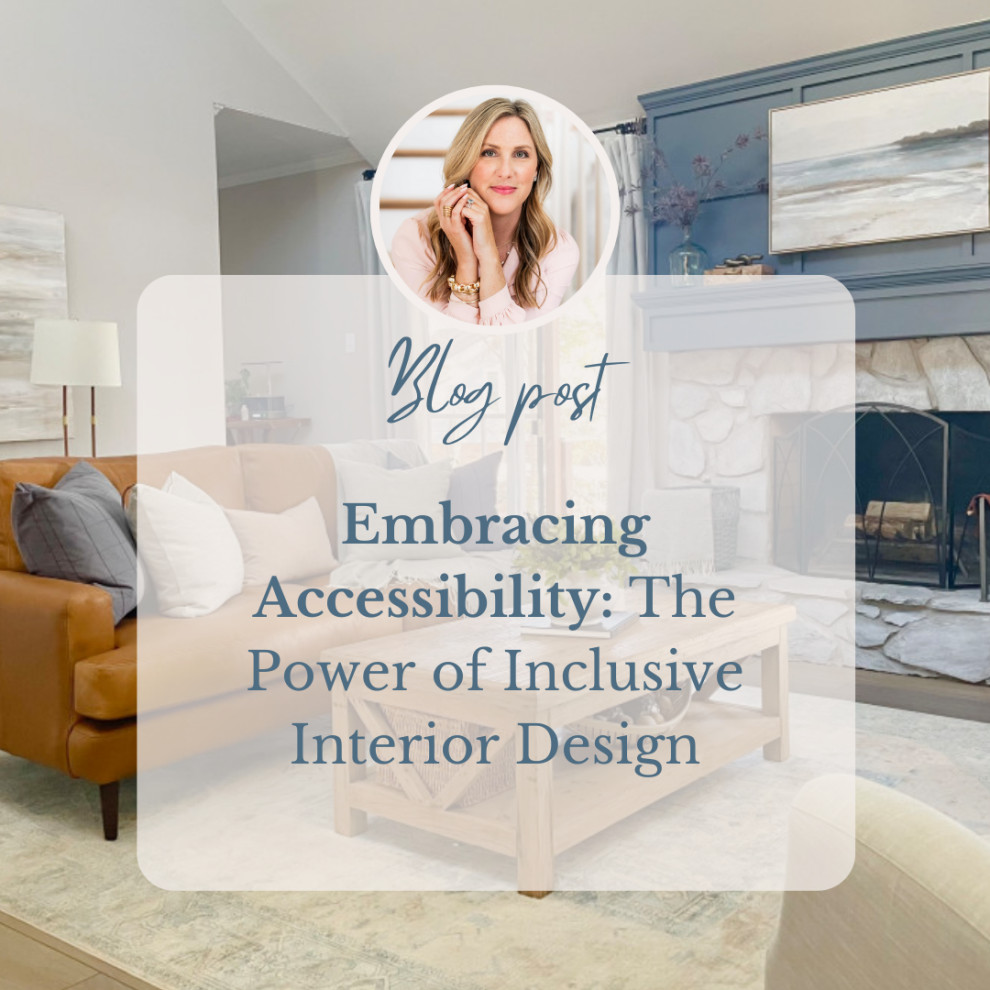Embracing Accessibility: The Power of Inclusive Interior Design

Introduction: In a world that celebrates diversity, it is essential that every individual, regardless of ability or disability, can fully experience and enjoy the spaces they inhabit. As interior designers, we hold the key to creating environments that embody independence, and comfort for all. Accessible design is not just a trend; it is a movement towards a more considerate and compassionate world. In this blog post, we will explore the significance of accessible design and its transformative impact on the lives of people with disabilities.
What is Accessible Design? Accessible design, also known as universal or inclusive design, is an approach to creating spaces that are usable by all people, regardless of their age, ability, or mobility. It involves integrating features that accommodate a wide range of needs, allowing everyone to navigate, use, and enjoy the space without hindrance.
The Philosophy Behind Accessible Design: At its core, accessible design is rooted in empathy and understanding. It acknowledges that each individual's experience is unique and seeks to eliminate barriers that prevent full participation in society. By embracing this philosophy, interior designers can empower people with disabilities to live independently, boost their confidence, and enhance their overall quality of life.
Creating an Accessible Home:
- Entrances and Exits: A home's entry points should be welcoming to everyone. Incorporate features like gently sloping ramps and well-lit pathways to make it easy for wheelchair users and individuals with mobility impairments to access the home.
- Wide Doorways and Hallways: Ensure that doorways and hallways are wide enough to accommodate wheelchairs and other assistive devices comfortably. A minimum width of 36 inches is recommended to provide ample space for maneuvering.
- Multi-Height Countertops: In the kitchen and bathrooms, consider installing countertops at various heights to cater to individuals who may be seated or require different reach levels.
- Slip-Resistant Flooring: Opt for flooring materials that offer traction to prevent slips and falls, benefiting everyone, particularly the elderly and those with mobility challenges.
- Sensory Considerations: Pay attention to lighting and acoustics, as well-designed illumination and sound control can significantly impact individuals with visual or auditory impairments.
- Lever-Style Handles: Swap traditional doorknobs and faucets for lever-style handles, which are easier to operate for people with limited hand strength or dexterity.
- Non-Intrusive Storage: Incorporate easy-to-reach storage options, such as pull-out drawers and shelves, to ensure that items can be accessed without excessive bending or stretching.
The Impact of Accessible Design:
- Enhanced Quality of Life: Accessible design fosters independence, promoting a sense of empowerment and self-reliance among individuals with disabilities.
- Social Inclusivity: By creating spaces that are accessible to all, we encourage social integration, breaking down barriers between people with and without disabilities.
- Future-Proofing: Accessible design takes into account life's uncertainties, making it a forward-thinking approach that benefits everyone, regardless of age or ability.
- Marketability: Universal design expands a property's appeal, attracting a wider range of potential buyers or tenants.
Conclusion: As interior designers, we possess the remarkable ability to shape the world around us and positively impact the lives of countless individuals. Embracing accessible design is not only about fulfilling legal requirements; it is an ethical responsibility to create spaces that respect the inherent dignity and worth of every person. Let us join hands in championing this transformative movement, making the world a more inclusive, understanding, and compassionate place, one thoughtfully designed space at a time.
